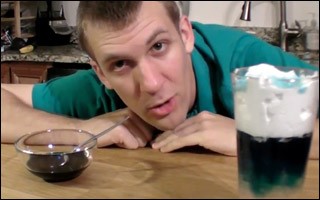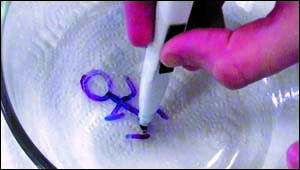Science
Introduction
At foundation level we look to grow your knowledge and understanding of a range of science topics throughout the year. We aim to develop an enjoyment of the subject and develop a range of skills through engaging practical work and we will introduce you to the importance of Science.
Science challenge
Try one or more of these experiments you can do at home. Take a picture and show it to your tutor, Mr Crockford, or Mr Thomas at the start of term to get a house point!
No.1 Orange Fizz
Materials:
- An Orange or Clementine
- 1/2 Teaspoon Baking Soda
Instructions:
- Cut the orange into slices or peel separate into sections
- Dip a slice or section into the baking soda
- Take a bite! As you chew, it should start to bubble in your mouth
How does it work?
When acids and bases mix, you get some exciting chemistry! Oranges and other citrus fruits are filled with citric acid. It is a safe acid, and it’s what gives oranges, lemons, and limes their sourness. Baking soda is a base, the opposite of an acid. It’s also safe, but doesn’t taste very good on it’s own, and will give you a tummy ache if you eat a lot of it. As the citric acid and baking soda mix, it makes millions of carbon dioxide bubbles, the same gas you breathe out, and the same one that makes soda so fizzy.
No.2 Storm in a Glass

Materials
- Shaving cream
- A large glass
- water
- Food coloring
- A spoon
Instructions:
- Fill the glass 1/2 full with water
- Spray some shaving cream on top of the water to fill the glass to ¾ full.
- Use your finger or a spoon to spread the shaving cream evenly over the top of the water. The top of the shaving cream should be flat.
- Mix ½-cup water with 10 drops of food coloring in a separate container. Gently add the colored water, spoonful by spoonful, to the top of the shaving cream. When it gets too heavy, watch it storm!
How does it work?
Clouds in the sky hold onto water. They can hold millions of gallons! The layer of shaving cream is our pretend cloud in this experiment. The shaving cream layer can also hold onto water. Clouds can’t keep storing more and more water forever, eventually they get too heavy. When that happens, the water falls out (precipitates) as rain, snow, sleet, or hail.
Further Experiments
- Try more water and less shaving cream, or less water and more shaving cream. Which one looks more like a drizzle, and which one looks like a downpour?
No.3 Dry Erase

Materials:
A glass plate, bowl, or picture frame
Dry erase marker
Water
Instructions:
Draw a simple picture on the glass. A stick figure is a good one to start with
Pour water onto the plate or into the bowl slowly to lift up the drawing
Swirl the water around to make the picture dance and move
How does it work?
The marker leaves behind mixture of pigments and a type of alcohol mixed together. The alcohol dissolves and the pigments are left behind as a solid. Glass is so smooth that the solid slides right off when it gets wet!







